| Author |
 Topic Topic  |
|
Vitali
Member Rosalia
  
Estonia
991 Posts |
 Posted - 25/03/2013 : 13:49:55 Posted - 25/03/2013 : 13:49:55



|
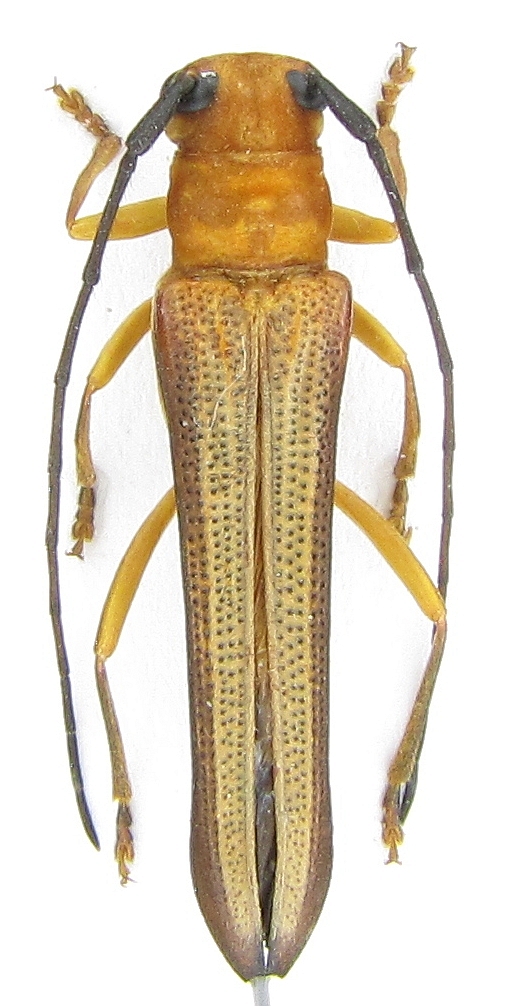
293.54 KB
Ventral side is completely yellow. |
Edited by - Xavier on 25/02/2017 10:23:50 |
|
|
Francesco
Forum Admin
    
Luxembourg
9420 Posts |
 Posted - 26/03/2013 : 07:32:03 Posted - 26/03/2013 : 07:32:03




|
| Possibly, Oberea humeralis Gressitt, 1939, but I have to know the proportion eyes/cheeks |
 |
|
|
Vitali
Member Rosalia
  
Estonia
991 Posts |
 Posted - 26/03/2013 : 19:30:32 Posted - 26/03/2013 : 19:30:32



|
Here is the front view.
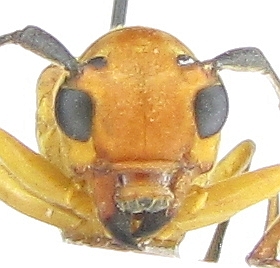
63.34 KB |
 |
|
|
Francesco
Forum Admin
    
Luxembourg
9420 Posts |
 Posted - 26/03/2013 : 22:13:15 Posted - 26/03/2013 : 22:13:15




|
No, O. humeralis (here) is very close but it has the pygidium black.
This should be O. fuscipennis (Chevrolat, 1852). |
 |
|
|
Vitali
Member Rosalia
  
Estonia
991 Posts |
 Posted - 27/03/2013 : 09:01:10 Posted - 27/03/2013 : 09:01:10



|
I am afraid, O. fuscipennis is not correct, at least according to Iconography of Chinese Longicorn Beetles. The description says it is a slender species with a long pronotum, which is clearly seen also in photo 1137 presented there. On the contrary, O. humeralis has a transverse pronotum, somewhat swollen dorsally and laterally. These features fit my photo.
There are some doubts concerning O. humeralis as well. In the photo you cited above, the whole pygidium is black. In my 3 specimens only the apical part of last tergite (a spot half-round towards front, about 1/3 of tergite) and the hind margin of last sternite is black. Besides, the size given for O. humeralis is 17-18.6 mm, while my beetles are between 19 and 23 mm. |
 |
|
|
Francesco
Forum Admin
    
Luxembourg
9420 Posts |
 Posted - 27/03/2013 : 18:54:14 Posted - 27/03/2013 : 18:54:14




|
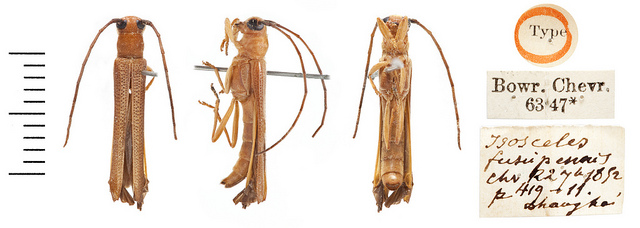
78.26 KB
I am not sure that the picture of that book corresponds to O. fuscipennis.
This is the type of the species.
Actually, the eyes of your specimen are smaller, but I did not find a species with such character. The size is too large as well.
According to Breuning (1963), the whole pygidium of O. humeralis is black except for the yellow base.
This corresponds to my specimen (that of the link). |
 |
|
|
Vitali
Member Rosalia
  
Estonia
991 Posts |
 Posted - 27/03/2013 : 21:25:16 Posted - 27/03/2013 : 21:25:16



|
Very interesting.
O. fuscipennis has nothing black in the apical part of abdomen.
I am almost sure now, my beetle does not belong to this species. I'll try to show the photo of the abdomen, when I have more time.
Some other observations: all my 3 specimens have laterally darkened elytra, like in photo above. Eyes are larger in male, and correspondingly the ratio eye/cheek (it is a female in my photo).
The "Iconography..." is a book of a dubious value. It presents photos and descriptions of 1406 spp, but leaves 1767 non-described and non-photoed. By the way, there are such names among non-photoed species, which sound perspective with respect to my beetle, e.g., O. rufiniventris Breuning, 1968, O. rufosternalis Breuning, 1968... But this may mean nothing. |
 |
|
|
Vitali
Member Rosalia
  
Estonia
991 Posts |
 Posted - 27/03/2013 : 22:59:45 Posted - 27/03/2013 : 22:59:45



|
Here is the face of a male. Cheeks are remarkably short.
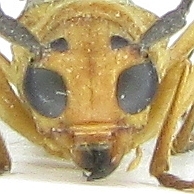
45.38 KB
... and last abdominal segments. Last sternite is with a strong dent in male.

32.43 KB |
 |
|
|
Francesco
Forum Admin
    
Luxembourg
9420 Posts |
 Posted - 29/03/2013 : 11:28:07 Posted - 29/03/2013 : 11:28:07




|
quote:
Originally posted by Vitali
Ventral side is completely yellow.
Ah! 
The ventral side was not completely yellow.
I have to check the keys another time. |
 |
|
|
Vitali
Member Rosalia
  
Estonia
991 Posts |
 Posted - 29/03/2013 : 11:31:49 Posted - 29/03/2013 : 11:31:49



|
Sorry again, first I did not notice the black margin of the last sternite  |
 |
|
|
Vitali
Member Rosalia
  
Estonia
991 Posts |
 Posted - 23/02/2017 : 13:38:23 Posted - 23/02/2017 : 13:38:23



|
Maybe Xavier and Kurahira can help? |
 |
|
|
Xavier
Scientific Collaborator
    
France
12092 Posts |
 Posted - 23/02/2017 : 14:08:31 Posted - 23/02/2017 : 14:08:31



|
 May be. May be.
First, do you have a lateral view to see how long hind femora is ? |
Edited by - Xavier on 23/02/2017 14:08:49 |
 |
|
|
Vitali
Member Rosalia
  
Estonia
991 Posts |
 Posted - 23/02/2017 : 14:20:29 Posted - 23/02/2017 : 14:20:29



|
| Not yet. I'll try to take a photo tonight. |
Edited by - Vitali on 23/02/2017 14:22:43 |
 |
|
|
Vitali
Member Rosalia
  
Estonia
991 Posts |
 Posted - 24/02/2017 : 13:13:29 Posted - 24/02/2017 : 13:13:29



|
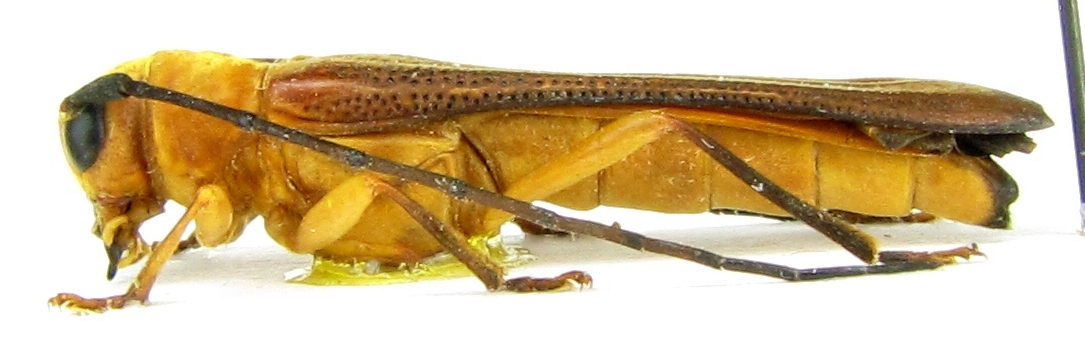
208.51 KB
A promised lateral view. |
 |
|
|
Xavier
Scientific Collaborator
    
France
12092 Posts |
 Posted - 24/02/2017 : 13:34:06 Posted - 24/02/2017 : 13:34:06



|
| Ok for me; my identical specimens have the same ID; Francesco is right. |
Edited by - Xavier on 24/02/2017 13:46:31 |
 |
|
|
Vitali
Member Rosalia
  
Estonia
991 Posts |
 Posted - 24/02/2017 : 16:20:08 Posted - 24/02/2017 : 16:20:08



|
| Do your specimens also have darkened pygidium and dark antennae? |
 |
|
 Topic Topic  |
|


